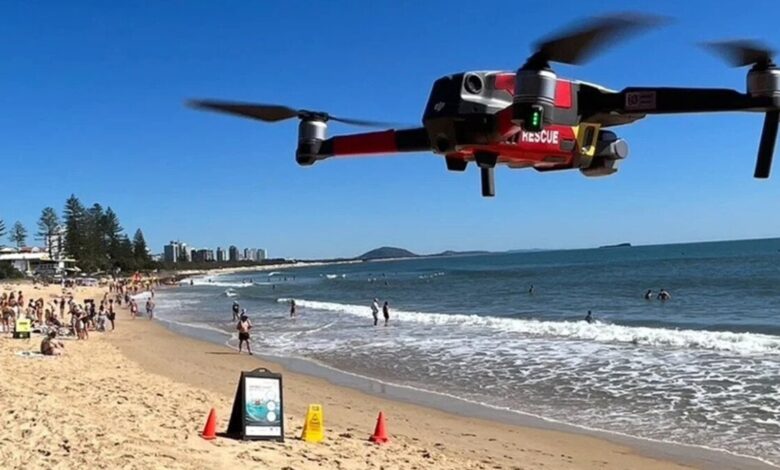
The government in Queensland, Australia, is testing whether drones can be used to detect sharks near beaches. Photo Credit: Larry Pynn
AnimalsTechnology AustraliaSafety at the Beach: Drone Scans Ocean for Sharks Nearby
The Australian authorities are trading nets and baited-hook drumlines for camera-equipped drones to prevent contact between humans and sharks and according to the latest trials, all parties involved, including marine life, benefit from this noninvasive method.
“You’re more likely to save someone from drowning than interacting with a dangerous animal,” states Leo Guida, a shark scientist with the Australian Marine Conservation Society. “There are clear benefits across the board” to having drones at the beach.
Protecting beachgoers from sharks has long been detrimental to marine life. Indeed, last year alone, nets and baited-hook drumlines caught 958 animals – including 798 sharks of which 70% died, 16 turtles, 10 dolphins, two dugongs, and 15 humpback whales. The use of a drone fixes all this, and trials conducted in 2020 and 2021 at Alexandra Headland, located on the Sunshine Coast of southeast Queensland, are showing success. During those trials, 3,669 drone flights were made along seven beaches. A total of 174 sharks were detected, of which 48 were greater than 2 meters in length. These sightings led to four beach evacuations due to the presence of the white, tiger, and bull sharks. The infrared-equipped drone used can fly for 20 minutes in winds above 34 km/h along a 396-meter route parallel to the shore, just behind the surf break. On busy days, the drone flies at 20 km/h at an altitude of 59 meters. Once a shark is detected by the pilot, the drone is lowered below 30 meters to assess the animal’s size and species. Should the shark be deemed a danger, the beach is evacuated. The program is set to continue through June 2025 at the cost of $1.3 million a year.



